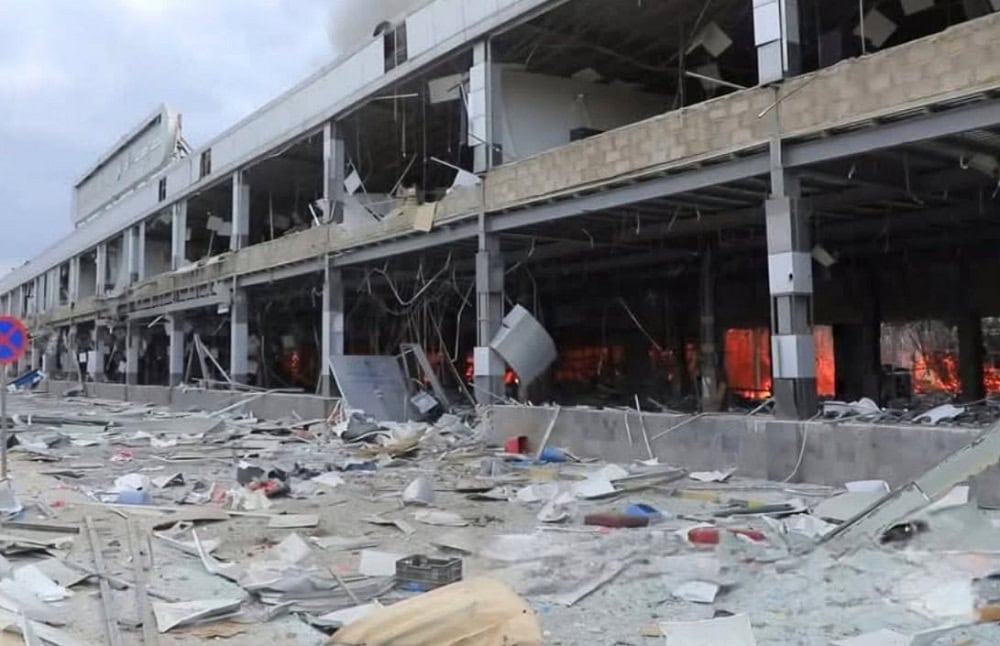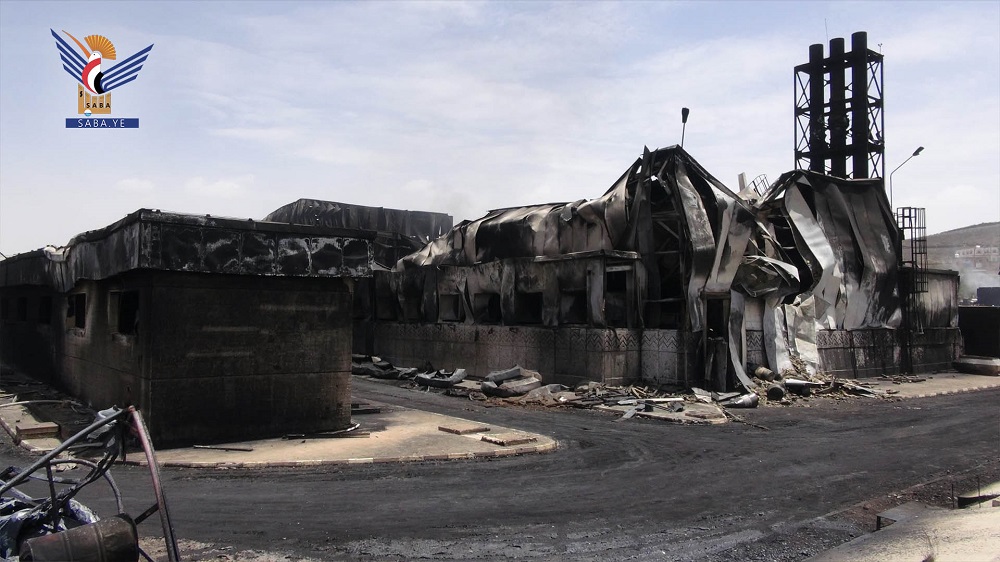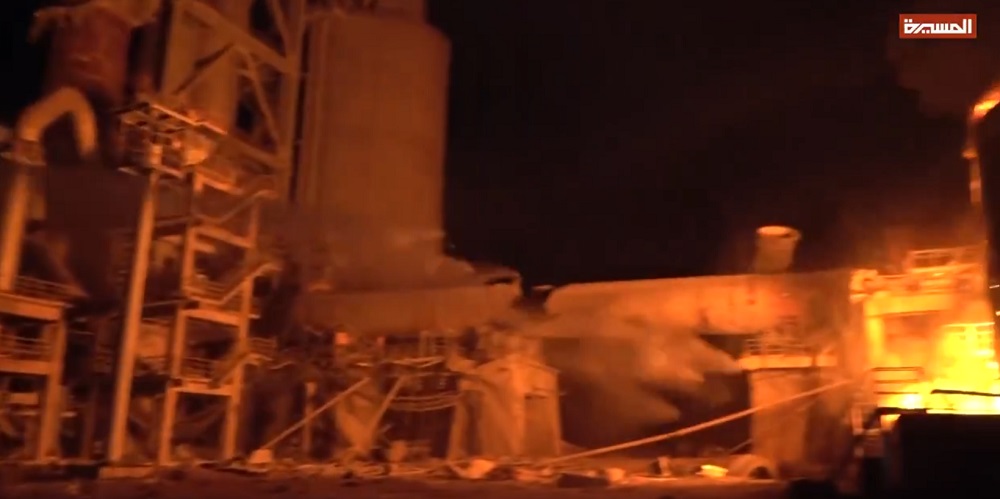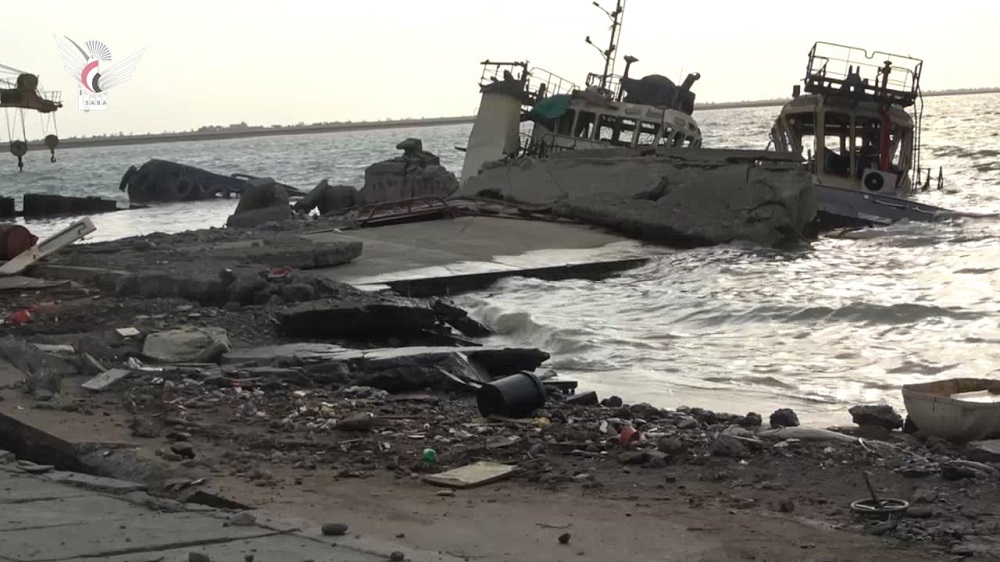
A photo published by Houthi media showing the extensive damage at Sanaa International Airport, caused by Israeli bombings on May 5, 2025.
Last updated on: 22-05-2025 at 1 PM Aden Time

|
|
Abdullah Al-Shadli (South24)
Since November 2023, the Yemeni crisis has entered a new stage due to the escalation of the Red Sea attacks by the Iran-backed Houthis. The attacks initially targeted commercial vessels which they said were linked to Israel. Later, their attacks expanded to include American and British ships, leading to the disruption of international navigation through the Bab Al-Mandab Strait.
The Houthi attacks on vessels in the Red Sea and their attacks deep inside Israeli territory have been met with an unprecedented military response from both Washington and Tel Aviv. This response reached its peak in mid-March when the Trump administration launched ’Operation Rough Rider‘ against the Houthis, which lasted for more than 45 days, concurrently with the most violent Israeli strikes against the Houthis.
So, what is the scale of the major financial damage caused by the Houthis to the economy and to people in areas under their control?
Extent of the Losses
The attacks on the Houthis, especially by Israel, were part of a punitive strategy aimed at dismantling the Houthis’ operational capabilities by targeting their airports, harbors, power stations, and main factories. The most violent among these strikes occurred on May 5 and 6 when Israel bombed targets in Hodeidah and Sanaa, respectively, in response to a dangerous Houthi attack launched on Ben Gurion Airport on May 4 which penetrated the air defenses, and impacted the airport grounds causing a 25 meter crater.
The Israeli retaliatory strikes in Hodeidah focused on destruction of the main Port. According to estimates, the May 5 bombing destroyed three main port docks. Political expert and economist Salman Al-Maqrami said that the cost of building a similar dock in 2015 was estimated at $300 million. This means that the direct losses from destruction of the three docks amounts to $900 million. In addition, the Port of Ras Issa was also bombed.

The Port of Ras Issa in Hodeidah after the Israeli bombing on May 5, 2025 (Saba News Agency affiliated with the Houthis)
The oil Port of Ras Issa in Hodeidah was targeted by a major US strike on April 17, leading to heavy destruction.
Regarding the bombing of Sanaa Airport by Israel on May 6, Al-Maqrami told ’South24 Center‘ that “at least nine aircraft were destroyed, including three whose total value is about $500 million. These planes belonged to Yemeni Airlines, affiliated with the Internationally-recognized Government. This is in addition to three planes that were out of service and three others whose ownership hasn't been disclosed. This increases the total losses at the airport to about a billion dollars as a result of these strikes."
Yahya Al-Sayani, Deputy Minister of Transport in the Houthi government, had announced that the Israeli airstrikes almost completely destroyed the airport's lounges along with damages to its systems and runways.
The Israeli strikes also hit cement factories, including the ’Bajil‘ in Hodeidah whose value is estimated at $400 million, according to Al-Maqrami. It includes a power station with a capacity of 32 megawatts and employs more than 1,250 workers. The Amran Cement Plant in Amran governorate, which was also subjected to bombing, is considered one of the most prominent facilities under Houthi control. It produces around 1.5 million tons annually with revenues reaching $180 million.
The bombing also targeted three main power generation stations in Sanaa - Haziz, Dhahban, and Asr, as well as two additional stations in Hodeidah. Sanaa-based economic expert Rashid Al-Haddad estimates the total production capacity of the three stations in Sanaa to be more than 120 megawatts.

Dhahban Power Station in Sanaa following the Israeli bombing on May 6, 2025 (Saba News Agency, affiliated with the Houthis).
The list of American and Israeli targets in recent weeks, according to Houthi statements and media sources, includes popular markets, water tanks, and military government complexes. So far, there is no official comprehensive statistics documenting the full extent of the losses. However, indications point to significant damage to vital infrastructure.
Repercussions
According to Al-Maqrami, the repercussions of the Israeli and American strikes are not limited to material losses, but extend to paralyzing the overall economic activity.

Bajil cement factory in Hodeidah after the Israeli bombing on May 5, 2025(Al-Masirah Channel affiliated to the Houthis)
Al-Maqrami told ’South24 Center‘ “the repercussion of the Houthis' actions on the regional stage continues to harm the Yemeni economy. The strikes are not the only outcome of these ventures; they are compounded by the American sanctions on the Houthis, including sanctions on two major private sector banks: The Yemen Kuwait Bank and the International Bank of Yemen.”
From a more technical perspective, Rashid Al-Haddad pointed out that the destruction of facilities such as airports and harbors will have long-term effects on the country's trading capability. He said: “These damages will inflict severe losses on the country in the medium and long term, as the destruction of vital infrastructure like ports and airports hinders trade movement and the import of essential goods, food, and fuel."
However, Al-Haddad doesn't endorse blaming the Houthis for the outcome. He believes that the US and Israel are responsible for the consequences of what he described as ”foreign invasion”.
Yemen affairs researcher Nick Brumfield believes that the airstrikes have not completely halted the activities of the Hodeidah ports. The American expert told ’South24 Center‘: "Despite the multiple major attacks that have caused damage to the Red Sea ports, the flow of food and fuel through Hodeidah, Ras Issa, and Salif has mostly continued. It seems that a major shortage of essential goods has been avoided, even as observers remain concerned about the long-term effects of these attacks."
Nonetheless, the destruction of cement factories means the loss of thousands of jobs and increases reliance on imports --in a country already suffering from a shortage of foreign currency. The damage to power stations has further deepened the energy crisis, leading to the collapse of basic services.

The cement factory in Amran following the Israeli bombing on May 6, 2025 (Saba News Agency affiliated with the Houthis
Broomfield warned of a sharper deterioration of the humanitarian situation in the Houthi areas. He explained that “the most disturbing aspect is the wide-scale decline of the humanitarian sector in the Houthi-held areas and those controlled by the Yemeni government. This is due to the ongoing Houthi harassment of international humanitarian workers, including the abduction of dozens on charges of espionage. This is in addition to the US designation of the Houthis as a Foreign Terrorist Organization.”
He added: “US food aid to Yemen has been fully suspended. Moreover, the Humanitarian Needs and Response Plan 2025 for Yemen, affiliated with the United Nations Office for the Coordination of Humanitarian Affairs (OCHA), has so far received only 8.9% only of the required finance. The UN agencies have repeatedly complained about the lack of adequate resources. This is largely attributed to Houthi violations.”
Growing Costs
Despite the recent announcement on May 6 about a de-escalation agreement between the Houthis and the United States with Omani mediation, the deal is limited to the Red Sea file and doesn't include Israel, which expressed its shock at this understanding. This keeps escalation as an open possibility.
In the latest wave of strikes, Israel resumed bombing the Hodeidah ports controlled by the Houthis on May 16. The new strikes came as a result of a Houthi missile attack on Ben Gurion Airport in Tel Aviv on May 15. Although the latter strike did not achieve the same penetration as the previous attack, it was enough to provoke an immediate Israeli response.

The main Port of Hodeidah following the Israeli bombing on May 5, 2025 (Saba News Agency affiliated with the Houthis)
Hebrew media outlets revealed details about the Israeli military operation. Channel 12 reported that the attack was carried out by more than 10 fighter jets using heavy loads of munitions. They targeted three maritime ports on the west of Yemen: Hodeidah, Salif, and Ras Issa.
Maariv reported the bombing of at least ten targets inside those ports. However, the Israeli Army Radio confirmed that the strikes were limited to the ports of Hodeidah and Salif under the name ’Operation Red Sunset‘. It noted that 15 aircraft dropped more than 35 bombs and that repairing the damaged infrastructure could take at least a month.
According to Al-Maqrami, the Houthis are directly responsible for the destruction of Yemen’s vital facilities. He emphasized that “the Houthis’ regional ventures are the direct reason for the inflicting of more destruction on Yemen’s capabilities. Yemeni people are the ones who are paying the price for these actions”.
On the other hand, Al-Haddad believes that these attacks come within an exceptional context, and considers them as the price for the political and military actions aimed at ”raising the Yemeni voice” loudly regarding sensitive regional issues, especially the Palestinian cause. He added: “Sanaa's operations deserve the paid price. They came as a response to the Arabic and Islamic abandonment of the Palestinian cause. They have affirmed Sanaa's ability to influence, and exploit its strategic geography, and impose a new military equation.”
Al-Haddad claimed that the Houthi authorities have what he described as “preemptive containment plans” to face the impact of the strikes. He pointed to “the rapid restoration of operations at ports and power stations and the repair of Sanaa airport runways”.
Accordingly, the economic repercussions of the Houthi attacks and the subsequent American and Israeli strikes reveal the heavy costs paid by Yemen not only at the infrastructure level but also regarding the erosion of the country's remaining economic and service resilience.
Amid uncertainty about the future of the escalation, the situation remains open to even more costly possibilities in light of the fragility of the temporary understandings and the absence of any prospects for a comprehensive political settlement.